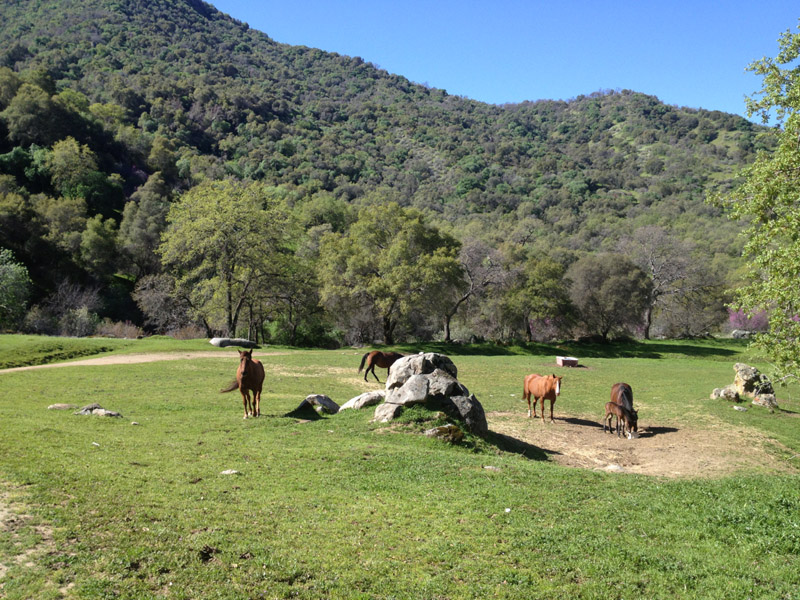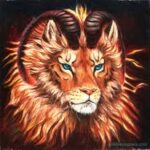
THE PEDESTRIAN’S GUIDE TO WRITING HORSES
1: Terminology
The world of horses carries a language of its own which can seem confusing to an outsider. Let me start by saying that I think terminology is the least important thing to get right (as long as your mechanics are solid and I know what you’re talking about, I don’t care much what you call a horse’s pole), but because I’m going to be using rather a lot of it I thought I’d start off with a glossary of sorts.
It is a good idea to have this chart on hand so when I start talking about the hocks and the croup and the coronet band you’ll know what I mean.
Also worth noting: horses are not measured in feet and inches, but in hands. A hand is four inches, so it’s a fairly easy conversion. The height of a horse is measured from the sole of their front hoof to their withers (see chart), but horses can appear much taller if they raise their head up (with effort a horse can hold its head at an angle that a giraffe does normally, though this is usually done only if the horse is excited or alarmed). An average horse is about fifteen and a half hands. A tall horse is sixteen hands or higher. A horse under fifteen hands is called a pony, unless you’re in England in which case a horse is a pony regardless of height as long as it is being ridden by a child. (This isn’t confusing at all, really.)
Horses come in many colors, but the most common are chestnut (brown all over) and bay (brown body with black mane and tail). Even within chestnuts and bays there are a great variety, and I direct you to google “equine coat colors images” for some excellent charts and pictures that will describe the myriad of colors and combinations better than I ever could. A few things, though, that should be mentioned:
Normal horses are very nearly never brindled. If you have brindled horses in your story, there had better be a reason (it’s a new breed! It’s magic!).
A gray horse does not look gray, but white. The gray refers to the skin under the white fur. Horses of this color are usually born a solid brown or black, and fade to white in the first few years. Gray is an extremely beautiful coloration; a clean gray will be blinding white in sunlight, but with a silver sheen from their dark skin that makes them look silvery.
A true white horse has pink skin and brown eyes, and is just as blinding in direct sunlight as a gray, but without the silvery undertone.
An albino also has white hair and pink skin, but likely has red/white eyes as well, and will have all the problems attendant on any albino animal.
(All horses with white or light fur will show dirt very easily, so unless your horse has a good reason to have been recently/regularly groomed and washed, your gray will likely show stains of brown and green.)
A buckskin and a dun are not the same thing: buckskin just means a horse with a beige body and black mane and tail, whereas the dun is a style of markings that can come in many colors. So a buckskin can be a dun, but a dun is not always a buckskin. Once again google images is your very very good friend.
It should also be noted that horses can have a variety of white markings: socks, stockings, stars, blazes, snips. Once again I direct you to google images rather than typing out an exhaustive list.
Tack is all the equipment used between the horse and the rider: saddles are what you sit in, girths are what keep the saddle on the horse, bridles are what hold the bit in the horse’s mouth, and the reins are what go between your hands and the bit. Again, google “horse tack images” and you will find all the information you need.
A mare is an adult female horse. A stallion is an intact adult male horse. A gelding is an adult male horse that has been neutered. (There is no special word for a sterilized mare; the surgery is expensive and not always safe, and generally not performed unless there is a pressing need.) A baby horse is called a foal; a female foal is a filly and a male foal is a colt. A breeding mare is called a brood mare. A mother horse is a dam and a father horse is a sire. A donkey is not a horse at all (but a fellow equine).
Horses move in four gaits, mostly (from slowest to fastest): a walk (one… two… three… four…), a trot (one-two one-two one-two), a canter (one-two-three one-two-three) and a gallop (oneoneoneoneoneone). A jog is a slow trot, and a lope is a slow canter—both terms commonly used in western (cowboy) settings. To complicate matters there are certain breeds called gaited horses, which have their own unique and outlandish gaits. (See Tennessee Walkers.) But for the most part the walk, trot, canter and gallop are all we need worry about.
I think that’s about all you need to be getting on with. Again, this is not a comprehensive glossary, but merely a preface so you will know what I’m talking about.
In the next chapter I’m going into the physicality of horses, their size and shape, and how they interact with their environment.
On to Chapter 2: Physicality ->
Goldeen Ogawa has been working with and around horses since she was five years old, has been a horse-owner since 2000, and currently rides every week. If you have any questions about horses not answered here you can email her at goldeenogawa@gmail.com or peck at her on Twitter @GrimbyTweets. There you can also follow her weekly horse pictures under the #TweetsFromHorseback hashtag.


























